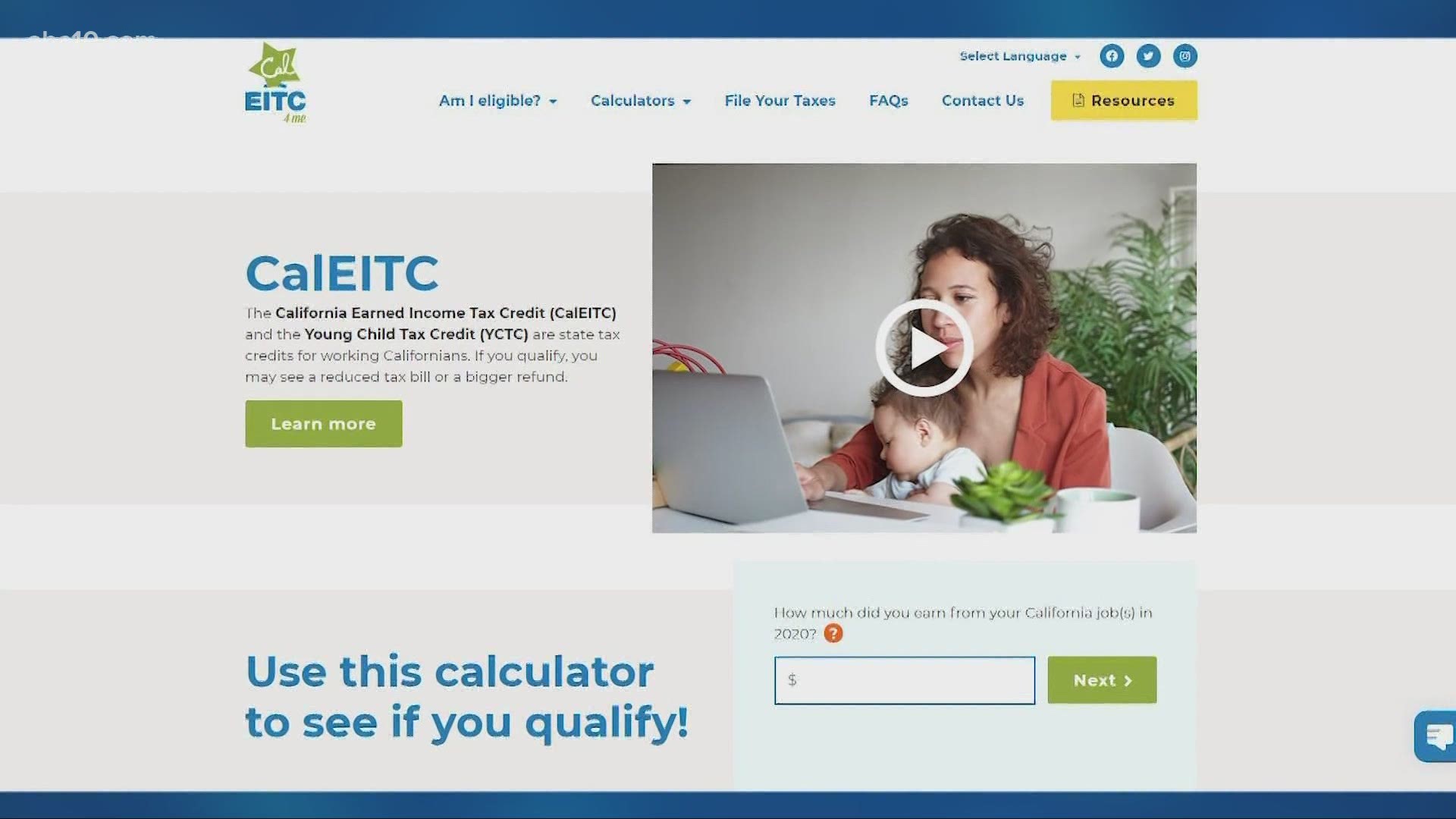SACRAMENTO, Calif. — A tax credit to help low-wage earners in California is failing to connect with hundreds of thousands of people, according to a new report from the California Policy Lab (CPL).
The CPL analysis found between 700,000-800,000 families didn’t claim the California Earned Income Tax Credit (CalEITC) in 2017, missing out on $75 million in benefits, a gap that may have grown to $90 million by 2020. The CalEITC offers up to $3,027 for taxpayers with an income of less than $30,000. Claiming the CalEITC was also a requirement for people to receive the first round of the Golden State Stimulus payments.
“California began offering the CalEITC in 2015 to better support low-income Californians, but it clearly isn’t reaching some of the people who could benefit the most from it,” explained Matt Unrath, co-author of the report and a research fellow at the California Policy Lab at UC Berkeley.
CPL looked at data from CalFresh enrollees and matched it with tax filing data to figure out how many people actually claimed the credit. It found that among 948,207 CalFresh households in 2017, about 47% did not claim the credit, missing out on $172 on average.
“That might not sound like very much, but for households with fairly modest earnings, that can make a really big difference. That’s roughly the size of a monthly food budget. And that's still an important amount of assistance that households might be leaving on the table,” Unrath said.
Since CPL only had access to CalFresh data, it can’t put an exact number on the people who qualified and didn’t receive the CalEITC, but it came up with an estimate that could double the number.
“So this analysis is limited to households who are enrolled in the state's food stamps program. But our best estimate suggests that maybe twice as many households, so roughly 700,000 to 800,000 households who were eligible for the state EITC did not receive it in 2017,” Unrath said.
Why people didn't get the CalEITC
The biggest reason for people not getting the credit is because they did not file a state tax return. Many low-income earners are not required to file state taxes, but not doing so means they can’t claim the CalEITC and are missing out on the money they are owed.
“And so, households with really modest earnings might not believe it's to their benefit to file, to go through the complicated and costly process of filing a state tax return,” Unrath said. “But what that means is that they are at risk of not receiving important financial assistance that's delivered through the tax system, like the CalEITC.”
Another 150,000 people filed taxes but didn’t claim the credit. The CPL found 66% of people in this group even used an in-person tax-preparation service. CPL can’t say for sure why the tax professionals didn’t file the tax forms for people to get the CalEITC, but says fees might be one reason.
“These tax preparers can charge extra fees for every form that they submit on behalf of filers. It's possible that the fees that they charged to submit a form like the schedule 3514, which you need to submit in order to claim the CalEITC, might exceed the benefits of claiming that CalEITC,” Unrath said. “So a key consideration for policymakers is to expand and make sure that households and eligible families have access to free tax filing so that they can receive this full assistance.”
Recommendations to connect more people with the CalEITC
The free tax filing goes along with four recommendations that Cal Policy Lab made in its report, to get more CalEITC money to eligible people:
- Under state law, Californians can claim up to four years of past credits. A one-time push by the state to get non-claiming households to file their taxes in order to claim the CalEITC could pay significant dividends for these families. These families might also be eligible to receive the new Golden State Stimulus if they file a return and claim the CalEITC.
- California should build on its prior and current efforts to send amended returns to filing nonclaimants.
- California should explore whether existing administrative data (like enrollment information in safety net programs such as CalFresh) could be used to simplify state tax filing for non-filers.
- California should use existing “touchpoints” in safety net programs (like eligibility verifications) to determine if people are eligible for the CalEITC, if additional eligibility information is needed, and could also then connect these Californians to resources like free tax preparation services.
How to claim missed CalEITC payments
One of the biggest takeaways from the report is that people who didn’t claim the CalEITC can still get the money.
“Households who are eligible for, or were eligible, for the CalEITC in any of the last four tax years, but did not receive it, can still submit a state tax return and claim this program,” Unrath said.
The state’s Franchise Tax Board has several free file options, including:
Click here for more information about qualifications for CalEITC and get help from CalEITC4me.org.



















